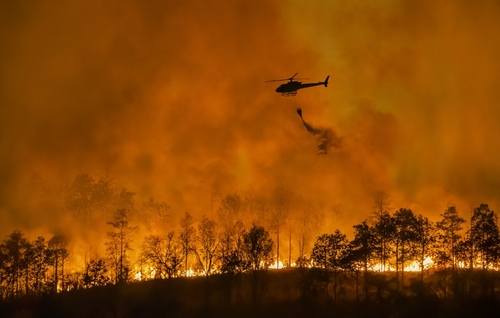California Department of Insurance took steps this week to ensure Californians in wildfire-distressed areas have access to insurance.

According to California Insurance Commissioner Ricardo Lara Thursday, the department has submitted its final wildfire catastrophe modeling legislation to the Office of Administrative Law (OAL) for approval. The legislation requires first-ever coverage commitments from insurance companies in an effort to stabilize the insurance market and expand options for homeowners and business owners in areas at high risk of wildfires.
“Consumers want solutions to our state’s insurance crisis. My new regulation will make insurance more available across the state,” Lara said. “As California experiences more intense climate impacts, technology will tell us where the risks truly are and accurately price rates that reflect mitigation and hardening investments.”
Officials said the proposed legislation will strengthen Proposition 103 which allows insurance companies to raise rates on homeowners, businesses and consumers, while not being legally required to offer coverage in wildfire-prone areas. The new modeling regulation, part of Lara’s Sustainable Insurance Strategy, introduces a requirement for insurers to increase their policy offerings in underserved areas as a condition of incorporating catastrophe modeling into ratemaking. This modeling allows insurers with the ability to assess risk and more accurately price insurance while making coverage more available to homeowners and business in wildfire-prone areas, Lara’s office said.
The department has already implemented several programs designed to reward homeowners and businesses for safety improvements. California has invested billions of dollars in wildfire risk reduction, Lara’s office said.
The modeling regulation includes requirements for insurance companies to increase the writing of comprehensive policies in wildfire distressed areas to no less than 85 percent of their statewide market share. Additionally, the modeling regulation includes a requirement for catastrophic models to account for mitigation efforts by homeowners, businesses and communities.
Once approved by the OAL, the regulation should take effect by the end of the year.